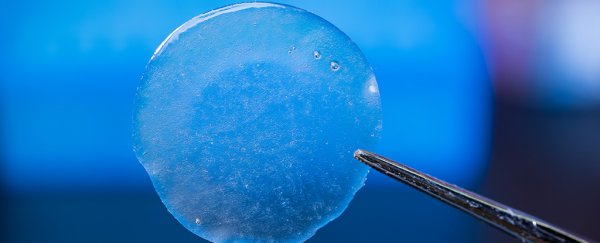A small, implantable device could transform the treatment of pancreatic cancer, with researchers announcing that in tests carried out on mice, the thin film was up to 12 times more effective than standard chemotherapy treatments, which usually involve the intravenous injection of drugs.
Part of the problem in tackling pancreatic cancer is the difficulty in getting chemo drugs to the pancreas, which is located deep within the abdomen. A better treatment option could have a huge impact - pancreatic cancer is the third leading cause of cancer-related deaths in the US.
The team from MIT has been developing the technology over the past three years, basing it on a flexible polymer called PLGA, which is already widely used for drug delivery and various other medical applications.
The film is rolled into a narrow tube and injected via a catheter – a fairly straightforward process – at which point, it unfurls and conforms to the shape of the tumour it's fighting. The embedded drugs are then released gradually over a pre-determined length of time.
Cleverly, the device only secretes the drug on the side attached to the tumour, which means the effect on surrounding organs is minimal.
In groups of mice carrying human pancreatic tumours, the tumour growth was found to slow down or even shrink after the new device was applied. What's more, the amount of necrotic tissue increased – dead cancer cells more easily removed through surgery – and metastasis (secondary tumour growth) in nearby organs was reduced.
"You can implant our device to achieve a localised drug release to control tumour progression and potentially shrink [the tumour] to a size where a surgeon can remove it," said one of the team, Laura Indolfi.
"This combination of local, timed, and controlled release, coupled with the judicious use of critical compounds, could address the vital problems that pancreatic cancer has provided as obstacles to pharmacological therapy," added her colleague, Elazer Edelman.
It's not just the location of the pancreas that makes fighting this type of cancer difficult: pancreatic tumours have few blood vessels and are often surrounded by a thick, fibrous coating, both of which make it difficult for drugs to get in.
Of course, successful experiments with mice are one thing, but we're going to have to see results from human trials before we can get too excited.
As Fast.Co reports, necessary approval from the US Food and Drug Administration to work towards this kind of thing should be relatively swift, as the drugs involved are already in use – but even so, it could be five years before this type of treatment is available to patients.
